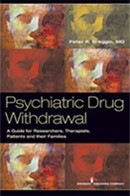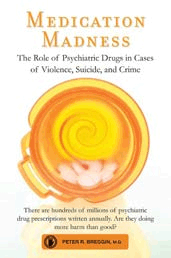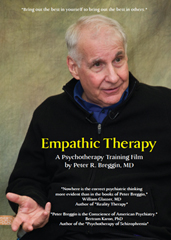Fenfluramine damage to the brain and mind
RECENT FDA DECISION HIGHLIGHTS ETHICAL ISSUES
IN DRUG RESEARCH ON CHILDREN
by Peter R. Breggin, M.D.
April 21, 1998
The FDA has put the interests of drug companies and the psychiatric research establishment ahead of those of America’s children. It is time for the public and concerned professionals to take a stand against unethical pharmacological research on children.
The April 22, 1998 issue of the New York Post carries a story of utmost importance for the future of America’s children: The FDA has given permission to certain facilities to use the banned diet drug fenfluramine for experimental research on children. The object of the research is to identify biochemical markers and potential treatments for violence. This is an aspect of the notorious violence initiative which we opposed and wrote about in The War Against Children. The FDA’s decision has been discovered amid mounting controversy over ongoing experiments on children in New York City involving fenfluramine.
The following comments are intended as an elaboration on a prior March 3, 1998 press release and background paper from the Center for the Study of Psychiatry and Psychology concerning fenfluramine studies conducted on children in New York City. Our criticisms have suddenly become even more important in light of the FDA’s determination to condone and to legitimize further such research.
The Dangers of Fenfluramine
The children in the ongoing New York City studies were exposed to fenfluramine, a drug used for weight control that was banned by the FDA in 1997 for causing heart valve defects. However, the controversy concerning these adverse effects extended back years in time before the experiments on children. The drug was already known to be dangerous.
In addition to heart valve dangers, fenfluramine is neurotoxic, causing the death of brain cells in animals at therapeutic dose levels. Fenfluramine is a drug closely related to Ritalin (methylphenidate) and to Dexedrine and Adderall (amphetamines). Animal research shows that it overstimulates and then kills serotonergic brain cells. As early as 1989, controversy was generated surrounding fenfluramine’s documented severe neurotoxicity (Barnes, DM. Neurotoxicity creates regulatory dilemma. Science 243:29-30, 1989).
Basic Ethical and Scientific Issues
These studies exemplify several dangerous trends in modern psychiatry, including Hi Tech Child Abuse and Racism.
First, these NIMH-funded studies at Columbia and Queens College exemplify the growing trend to abuse and suppress children in the name of psychiatric research, technology, and treatment. In a nation where millions of children are being behaviorally controlled and subdued by means of psychiatric drugs such as Ritalin, Dexedrine and Adderall, it is inevitable that our most vulnerable groups of children will be subjected to especially abusive drug experiments.
Second, these NIMH-funded studies exemplify psychiatric and medical racism at its worst. These doctors have been willing to use poor black and Hispanic children to conduct medical experiments that they could not have conducted on more affluent white children. These doctors have taken advantage of these vulnerable children and their families in order to further their own research interests and careers.
Third, while no drug company money is known to be involved in these studies, the drug companies, including Novartis (the maker of Ritalin) and Eli Lilly (the maker of Prozac) have been trying to expand their market among children. This marketing decision to push more drugs on children is at the heart of the research community’s growing focus on drugs for children. Fenfluramine studies that examine serotonin as a possible factor in violence are especially important to drug companies such as Eli Lilly who making drugs like Prozac which affect serotonin.
Fourth, these studies reflect the growing trend to mislead parents about the dangers of psychiatric drugs. In a nation in which millions of children are being drugged with stimulants and antidepressants without their parents being told about the serious hazards, it is no surprise that the parents of poor children and racial minorities would be misled, hoodwinked, and coerced into accepting even more dangerous drug research on their children.
The Columbia study is particularly offensive in regard to informed consent. The children were obtained through the Department of Probation. They are the younger brothers of boys already involved in the criminal justice system. Finding experimental subjects through the Department of Probation was in itself an invasion of privacy and a misuse of the criminal justice system. Asking the parents to subject their children to research on the face of it was very coercive. To refuse, they had to risk the enmity of legal authorities in control of their children.
Fifth, the study was of no potential benefit to the children. In fact, it was demonstrated by NIMH studies published in 1989 (see below) that fenfluramine, while having serious side effects, had no therapeutic benefit whatsoever. Thus the children were given a dangerous drug of no possible benefit to them. This is unethical under standard guidelines for medical experimentation on children.
Sixth, the research was highly speculative and unlikely to produce any positive result.
A Dangerous New Trend
This research represents a growing trend in the United States to perform outrageous research on children. The Center for the Study of Psychiatry and Psychology first became involved in these issues in 1972 when we discovered that black children as young as age five were having psychosurgery performed on them at the University of Mississippi in Jackson in order to control “hyperactive” and “aggressive” behavior. Their brains were being implanted with electrodes that were heated up to melt areas of the brain that regulate emotion and intellect. When we first opposed these experiments, and eventually stopped them, we did so despite resistance from organized psychiatry and the research community.
Twenty years later in 1992 we discovered the federal violence initiative–the federal government’s agency-wide plan to go into America’s inner cities to experiment on children in the hope of finding genetic and biological causes for violence. We opposed this program as racist and abusive of children. Our efforts led to the cancellation of this program. It also led the chief sponsor of the program, psychiatrist Frederick Goodwin, to resign from his post as director of NIMH and to leave a career in the government.
The fenfluramine studies at Columbia and Queens College are part of the violence initiative. They were created under its umbrella before it was cancelled. They confirm our fears that while the public aspects of the violence initiative were withdrawn, the actual individual projects continue unabated.
NIMH has a long history of supporting what we call Hi Tech Child Abuse. Between 1989 and 1994, NIMH was funding experiments with fenfluramine. In a comparison study with Ritalin, principal researcher Michael Aman was giving children doses up to 1.6 mg kg of fenfluramine per day. The children, age 5-13, were mentally retarded — another group notoriously vulnerable to medical experimentation.
Yet it was already known by 1989 that fenfluramine has no positive effect on the behavior of children, even by NIMH standards. This was confirmed in a study conducted during the early 1980s and published in 1989 by NIMH’s Child Psychiatry Branch (Maureen Donnelly, Judith Rapoport, et al., “Fenfluramine and Dextroamphetamine Treatment of Childhood Hyperactivity,” Archives of General Psychiatry, 46:205-212, 1989).
It is time for Americans to demand that psychiatric researchers stop using children as human guinea pigs.





